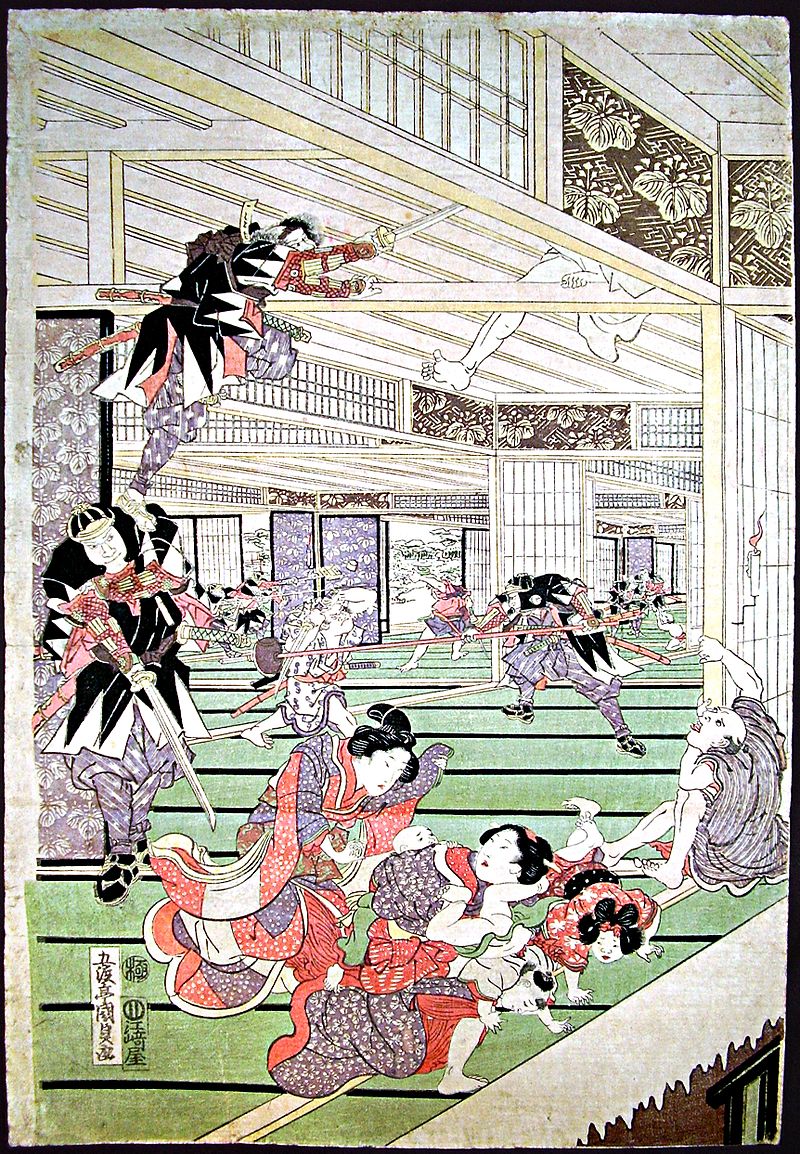1703
The 47 Ronin avenge their master
The era of the Tokugawa Shogunate in Japan which spanned 250 years from the early 1600s was a time of rigid social distinctions and iron-clad custom. Sometimes strong moral impulses clashed and produced epic stories such as that of the 47 Ronin which intrigues even today.
The story begins with a dispute between a rural daimyo (feudal lord) named Asano and a high-ranking official of the shogunate, Kira Kozuke-no-Suke Yoshinaka. Kira, angry because he had not been sufficiently bribed, offended Asano, provoking the daimyo into attacking his superior with a knife. This was a serious matter as it occurred on the grounds of the ruler’s palace: Asano was ordered to kill himself; his holdings were to be seized, his family disgraced, and his retainers were to be made “ronin” – outcasts, masterless men. Moreover, the government ruled that no revenge was to be taken against Kira for having started this catastrophe.
Dozens of Asano’s men, however, vowed to avenge their master as their samurai code demanded, but they knew that Kira would be watching for such a move. Therefore, they split up and appeared to accept their fate; they took regular employment, knowing that they would be regarded as spiritless and cowardly for doing so. Their leader Oishi, acted particularly boorishly, becoming a drunkard and consorting with prostitutes, reviled by those who knew him for being such a loser.
When almost two years had passed, and Kira’s guard was relaxed, the ronin reconvened with a plan to attack their enemy’s castle. They had gathered arms in secret and obtained plans of the fortifications; on the night of January 30, 1703 in the middle of a snow storm, the 47 samurai stormed the castle from the front and rear. The immediate neighbours had been alerted that what was taking place was legitimate vengeance so that they would not interfere. Once inside, the attackers went from room to room, searching for Kira and killing those who opposed them. Kira was located hiding in a woodshed. He refused to kill himself so Oishi cut off his head and the ronin left to turn themselves over to the authorities, after first laying Kira’s head on their master’s tomb.
Their actions placed the government in a moral quandary. On the one hand, they had broken the shogun’s command that no revenge should be taken; on the other hand they had honourably avenged their master as samurai should. Moreover, the ronins’ deed was widely approved of by those who had learned of it. The solution: instead of being executed, the ronin would be given the opportunity to ritually kill themselves. Their graves immediately became the site of pilgrimage and respect and their story has been celebrated in art, drama, literature and film ever since.
